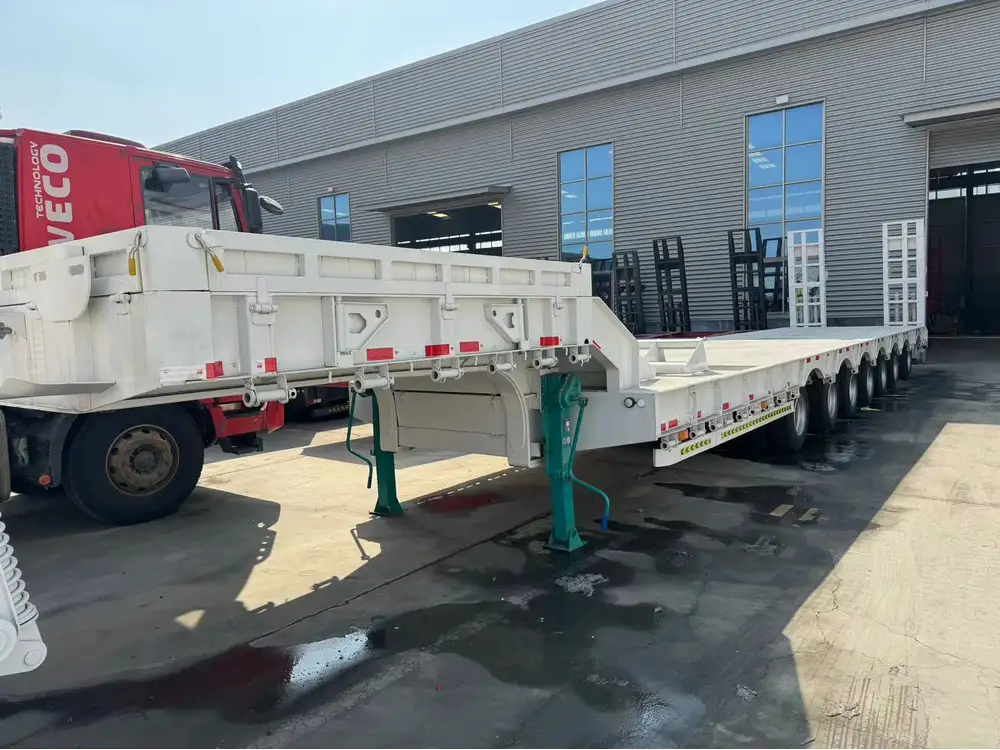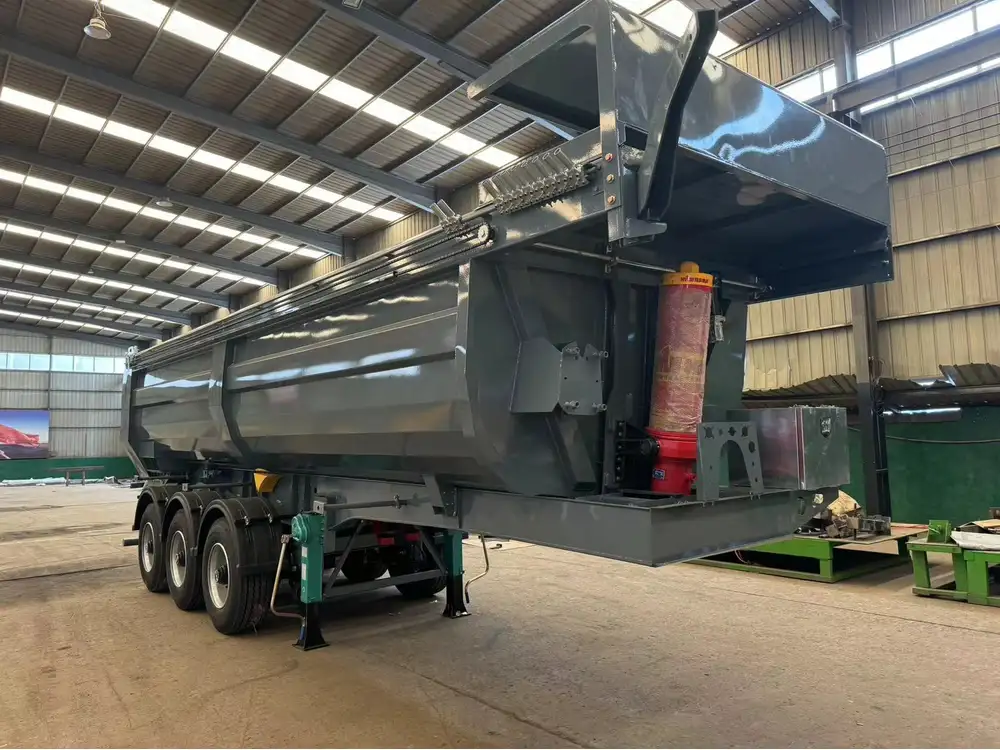Parking a tank trailer is not merely an act of stopping a vehicle; it involves a detailed understanding of safety protocols, environmental considerations, and the dynamics of the trailer itself. As manufacturers and operators, it’s crucial that we navigate the complexities of parking tank trailers effectively and efficiently to prevent accidents, ensure compliance with regulations, and maintain operational productivity. In this comprehensive guide, we delve into the key aspects of safely parking a tank trailer, highlighting essential techniques, tips, and best practices.
Understanding the Importance of Safe Tank Trailer Parking
When considering the parking of a tank trailer, several critical factors must be addressed:
- Load Stability: Ensuring that the load remains balanced to prevent any potential tipping or shifting.
- Environmental Safety: Complying with local regulations concerning hazardous materials and spill prevention.
- Accessibility: Making sure that the parked tank trailer does not impede traffic flow or emergency access.
- Equipment Protection: Safeguarding both the trailer and surrounding infrastructure from damage.
The Crucial Steps for Safe Tank Trailer Parking
To effectively park a tank trailer, adhere to a systematic approach. The following steps outline the comprehensive process:

Step 1: Assess the Parking Location
Before parking, evaluate the chosen area. Look for features such as:
- Level Ground: Always seek a flat surface to minimize the risk of rolling.
- Adequate Space: Ensure there’s ample room to maneuver both the trailer and the towing vehicle.
- Proximity to Hazards: Keep a safe distance from roadways, buildings, and other potential dangers.
| Criteria | Ideal Conditions | Risks |
|---|---|---|
| Surface | Level, solid ground | Slopes, puddles, or soft ground |
| Space | Ample clearance | Traffic interference |
| Hazards | Away from flammable materials | Spills, explosions, and collisions |
Step 2: Employ Proper Hook-Up Techniques
Once the location is selected, ensure that hooking up the trailer is done with precision. This includes:
- Aligning the Truck and Trailer: Use markers or cones for optimal alignment.
- Engaging the Fifth Wheel: Ensure a secure connection to avoid disconnection while parking.
- Performing Safety Checks: Verify that all connections (brakes, electrical) are intact.
Step 3: Apply Brakes and Stabilizers
This is a crucial step for enhancing safety and ensuring load integrity:
- Set the Trailer Brake: Engage the parking brake once the trailer is stationary.
- Deploy Wheel Chocks: Place chocks beneath the wheels, especially on slopes, to prevent rolling.
- Use Stabilizing Legs: If available, deploy stabilizing legs for added security.

Step 4: Monitor Tank Load Dynamics
Parking a tank trailer loaded with liquids demands special attention. Here’s how to manage load dynamics:
- Check Weight Distribution: Ensure even load distribution to reduce the likelihood of tipping.
- Monitor Liquid Movement: Understand that liquids shift during parking; this can cause instability. If necessary, adjust the load.
| Load Condition | Action Required | Comments |
|---|---|---|
| Full Load | Confirm stabilizing measures | Liquid shifting can affect balance |
| Partially Loaded | Secure with additional chocks | Increased risk of rolling if not stable |
| Empty | Ensure no residuals in tank | Residual liquids can shift during parking. |
Step 5: Ensure Legal and Environmental Compliance
It’s paramount to adhere to local safety regulations and environmental laws:
- Notification of Nearby Residents: If parking near residential areas, inform neighbors.
- Documentation: Keep parking records, especially when hazardous materials are involved.
- Emergency Protocols: Familiarize yourself with emergency procedures should an incident occur.
Special Considerations for Hazardous Materials
Parking tanks that transport hazardous materials requires additional precautions:

Spill Prevention Measures
- Containment Basins: Utilize spill kits or containment measures to manage leaks.
- Regular Inspections: Periodically check for leaks or damages at the parking site.
Fire Safety Protocols
- Maintain Distance: Keep parked tank trailers at least 50 feet from potential ignition sources.
- Access to Fire Extinguishers: Ensure fire extinguishers are within reach and fully charged.
Emergency Response Plans
- Have a Response Team: Train personnel on how to manage leaks or spills effectively.
- Emergency Equipment: Keep appropriate safety gear on site, including PPE (Personal Protective Equipment).

Tips to Enhance Tank Trailer Parking Efficiency
Incorporate these tips into daily operations to maximize efficiency and safety:
Regular Training for Operators
Consistent training refreshes knowledge about best practices and promotes safety awareness. Topics include:
- Handling Emergencies: Simulation-based training for real-life emergency scenarios.
- Vehicle Maneuvering Techniques: Proper techniques for backing up and parking tank trailers.
Utilizing Technology
Innovative technologies can significantly streamline the parking process:
- GPS Navigation: To identify optimal parking locations.
- CCTV Monitoring: For real-time safety oversight.

Perpetual Maintenance Checks
Implement a routine maintenance schedule to ensure both the tank and the towing vehicle are in top condition. Regular checks should include:
- Brake Systems: Ensure functionality to prevent accidents during parking.
- Tires: Verify tire pressure and tread for maximum safety.
Addressing Common User Queries and Concerns
To provide comprehensive support, let’s analyze frequent questions associated with parking tank trailers:
What Are the Consequences of Improper Parking?
Improper parking can lead to:
- Legal Consequences: Fines for non-compliance with local parking regulations.
- Equipment Damage: Increased wear and tear on tires and suspension systems.
- Environmental Hazards: Potential spills leading to costly clean-up efforts.

How Can I Improve My Trailer Parking Skills?
Enhancing parking skills can be achieved through:
- Practical Training Sessions: Engaging in hands-on training with experienced operators.
- Feedback Mechanism: Establishing a constructive debriefing process post-parking activities.
What Equipment is Recommended for Safe Parking?
Certain tools can aid in a seamless parking operation, including:
- Wheel Chocks: Essential for immobilizing the trailer.
- Leveling Tools: Ensure the trailer is parked on a level surface.
- Traffic Cones: Utilize cones to secure the parking area and signal to others.
Conclusion: Ensuring Safety Through Knowledge and Preparation
In conclusion, the principle of safely parking a tank trailer revolves around thorough knowledge and diligent adherence to safety protocols. By implementing these well-structured techniques and tips, we not only address immediate parking challenges but also cultivate a culture of safety and compliance. As we push towards excellence in both practice and technology, it is incumbent upon every operator to recognize the critical importance of these procedures—not merely out of obligation but as part of a comprehensive commitment to safety and efficiency.
Together, through collective efforts and continued education, we can significantly reduce risks associated with tank trailer parking, thus securing our reputation as a leader in the industry.



